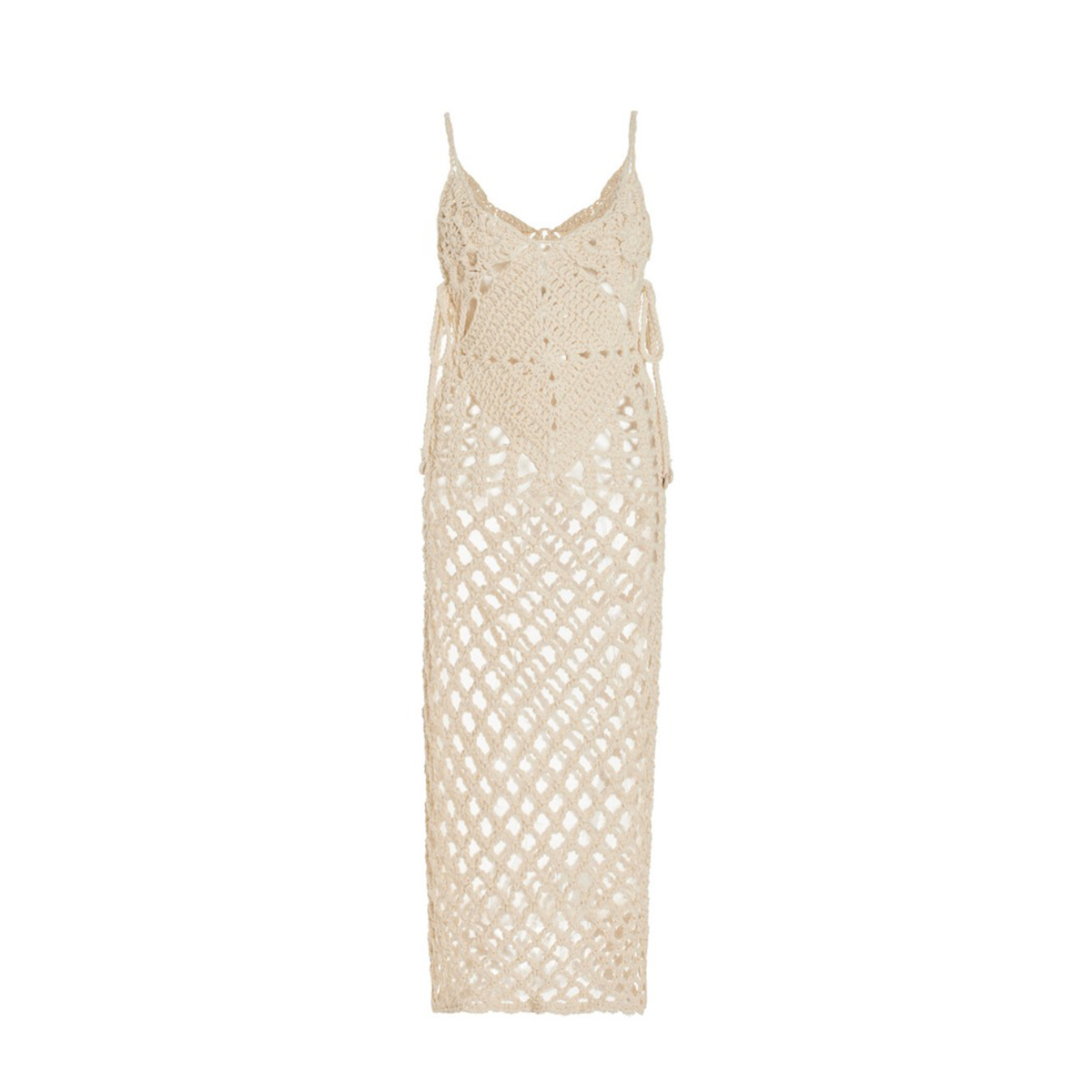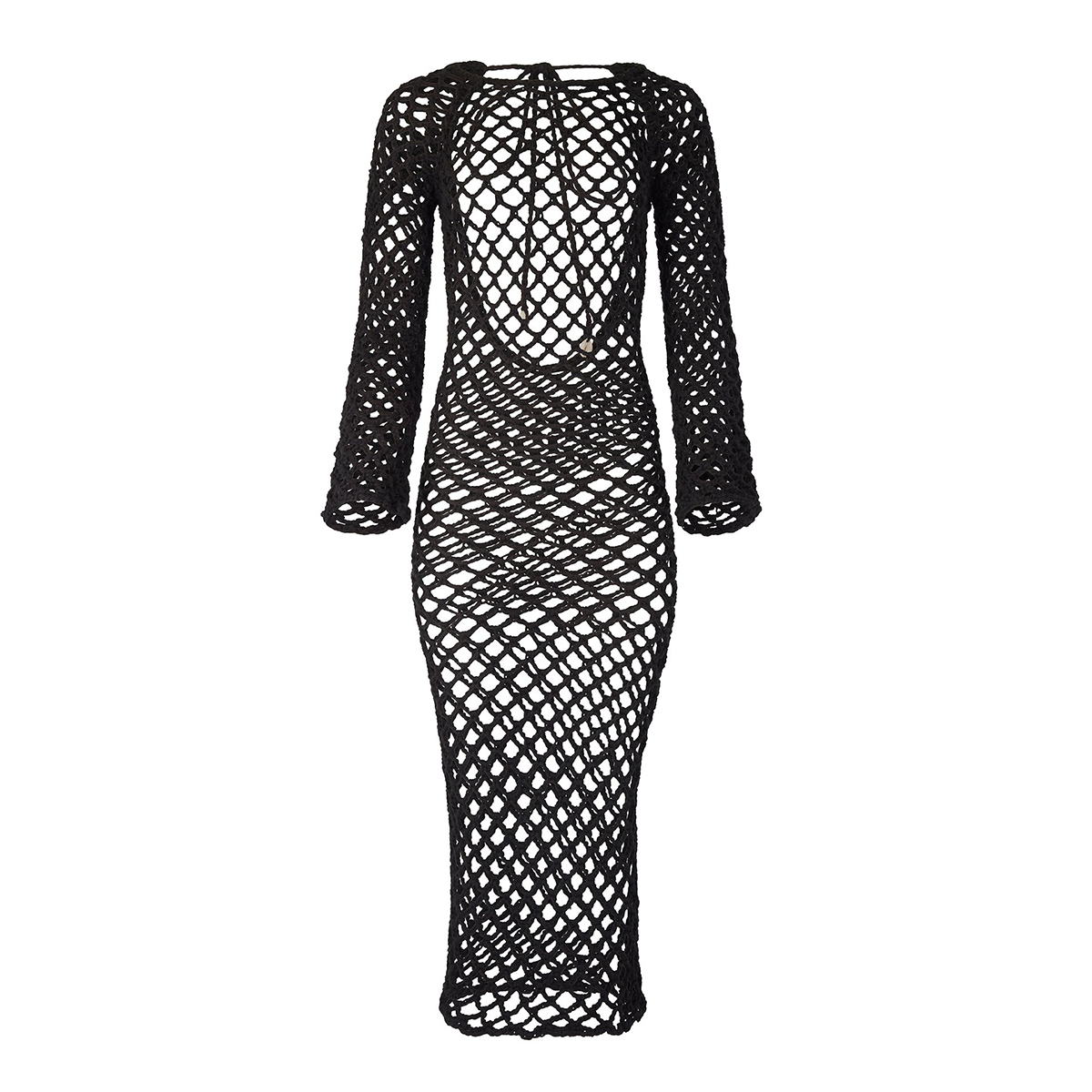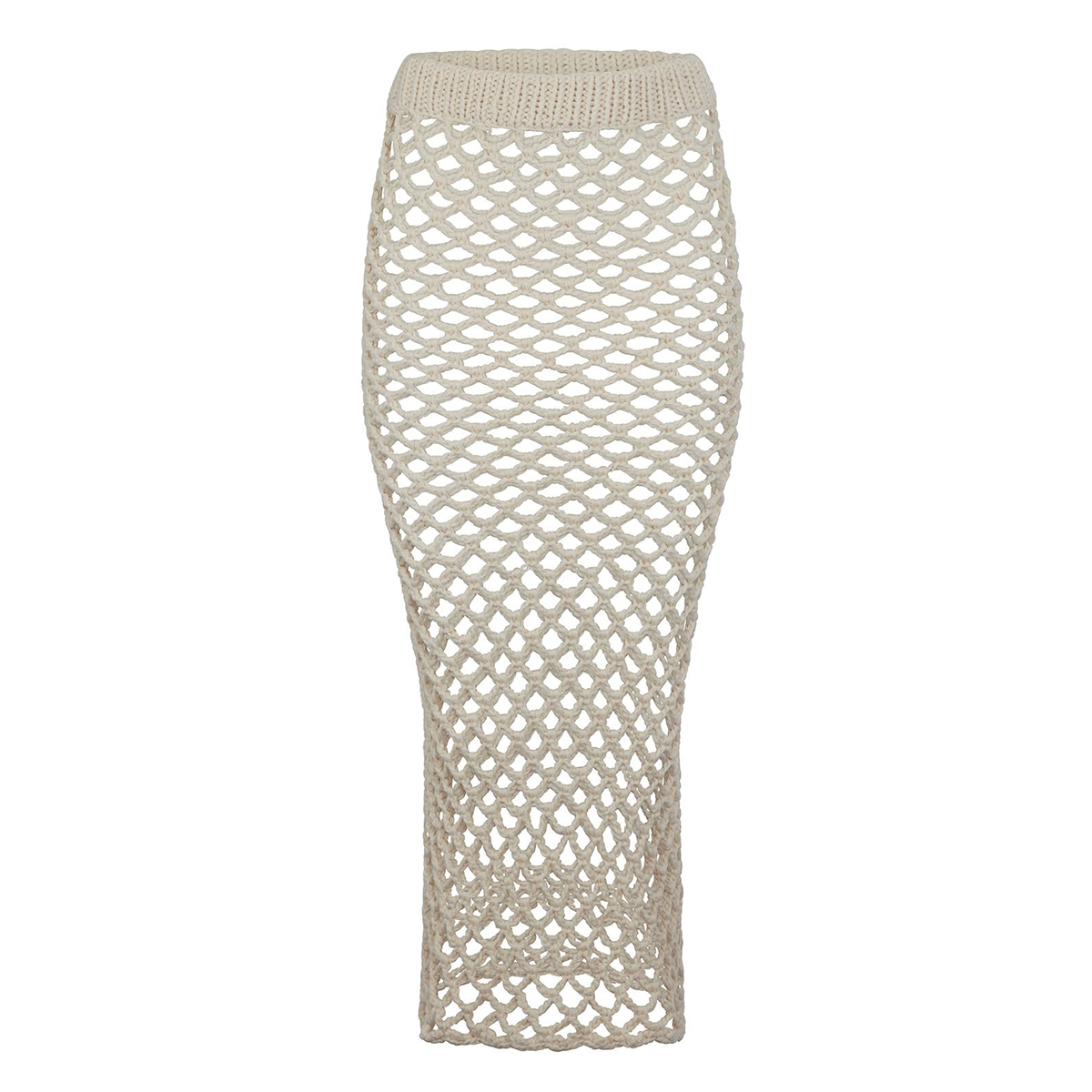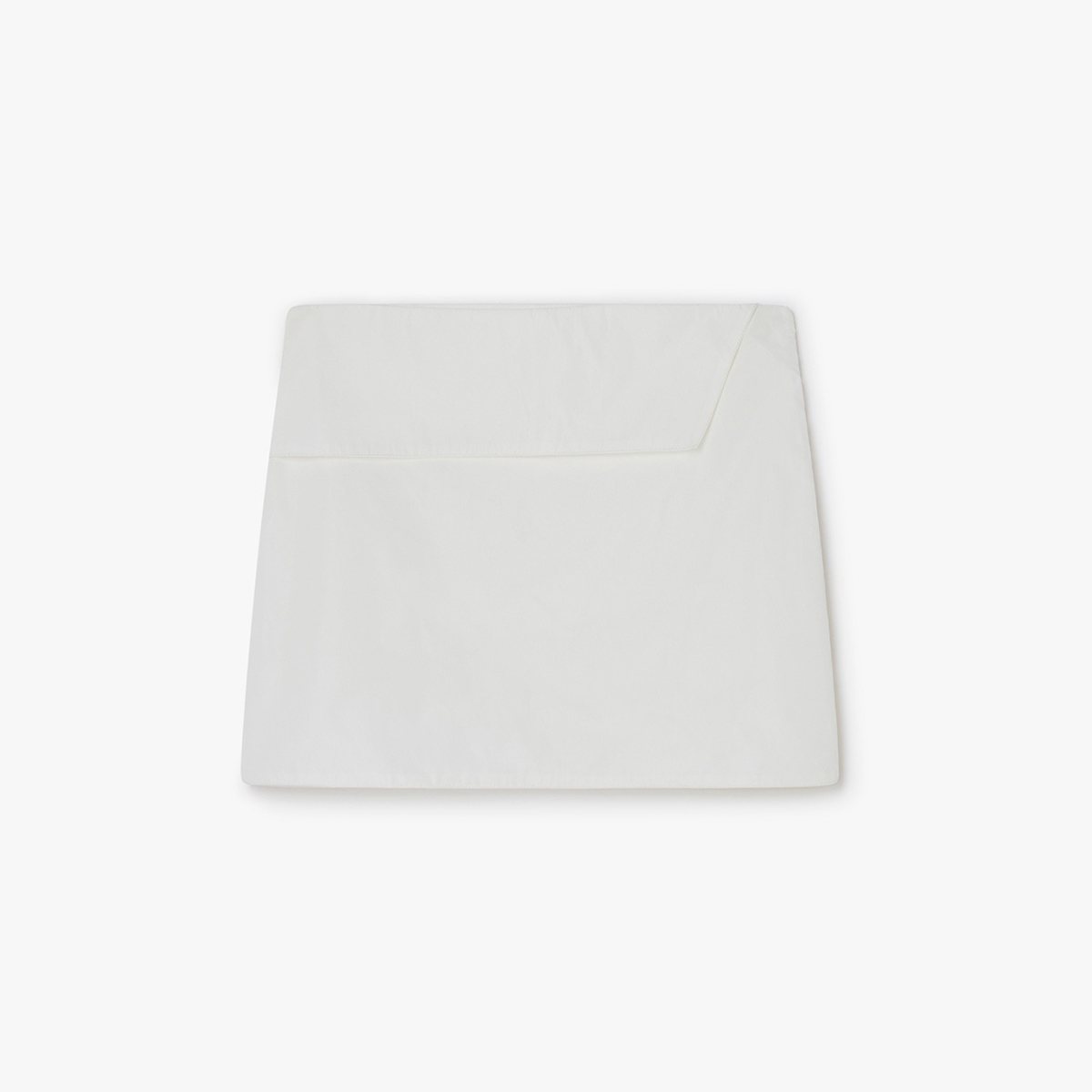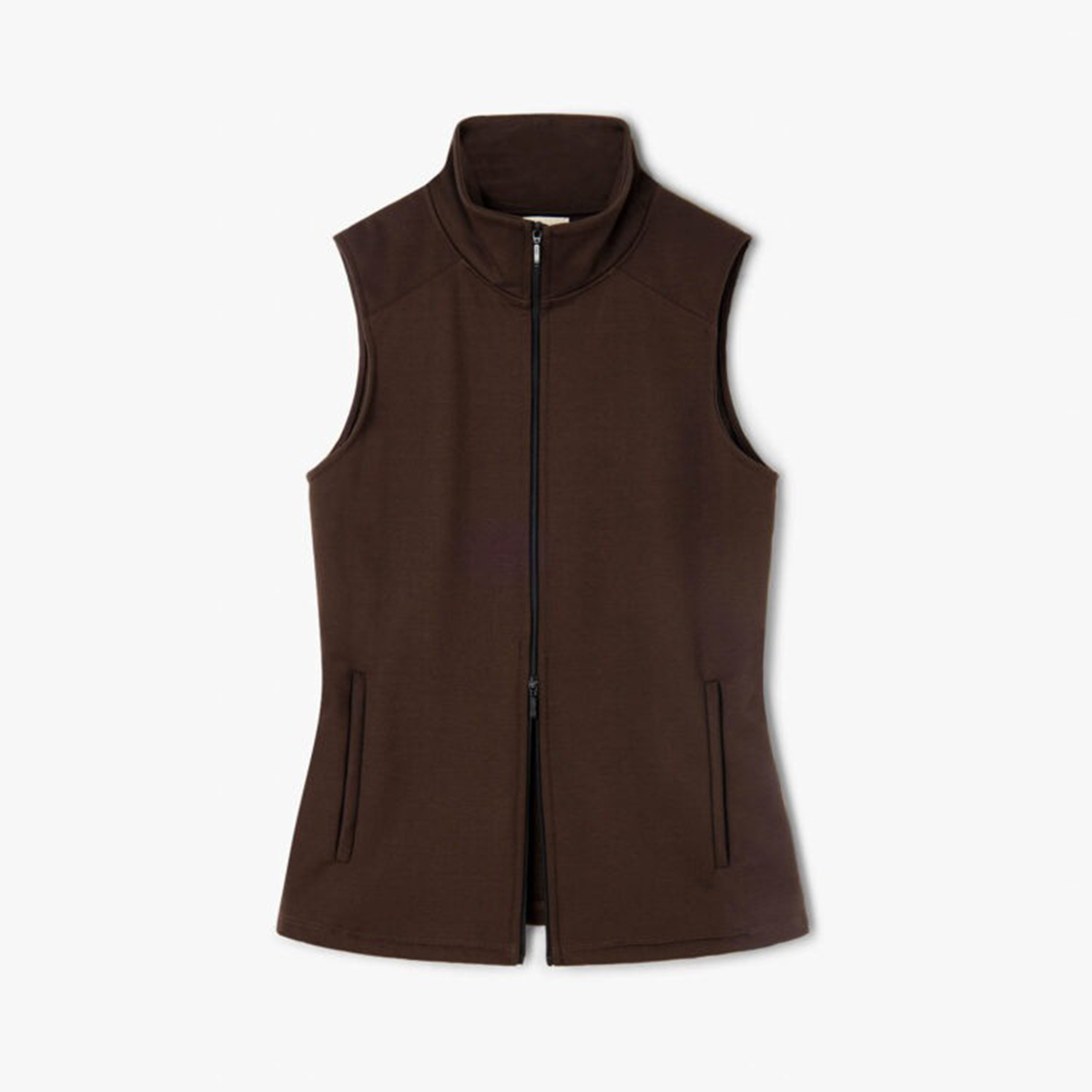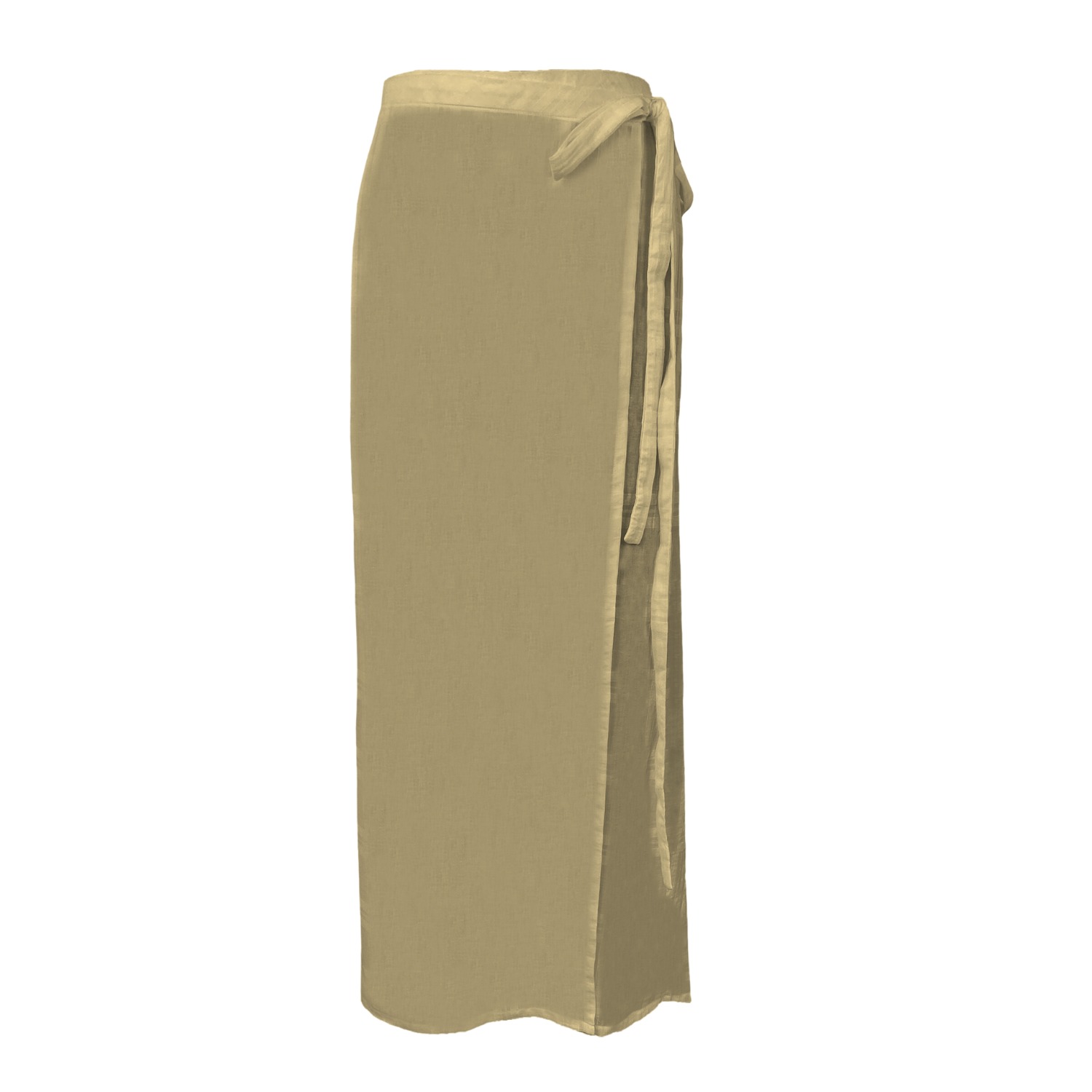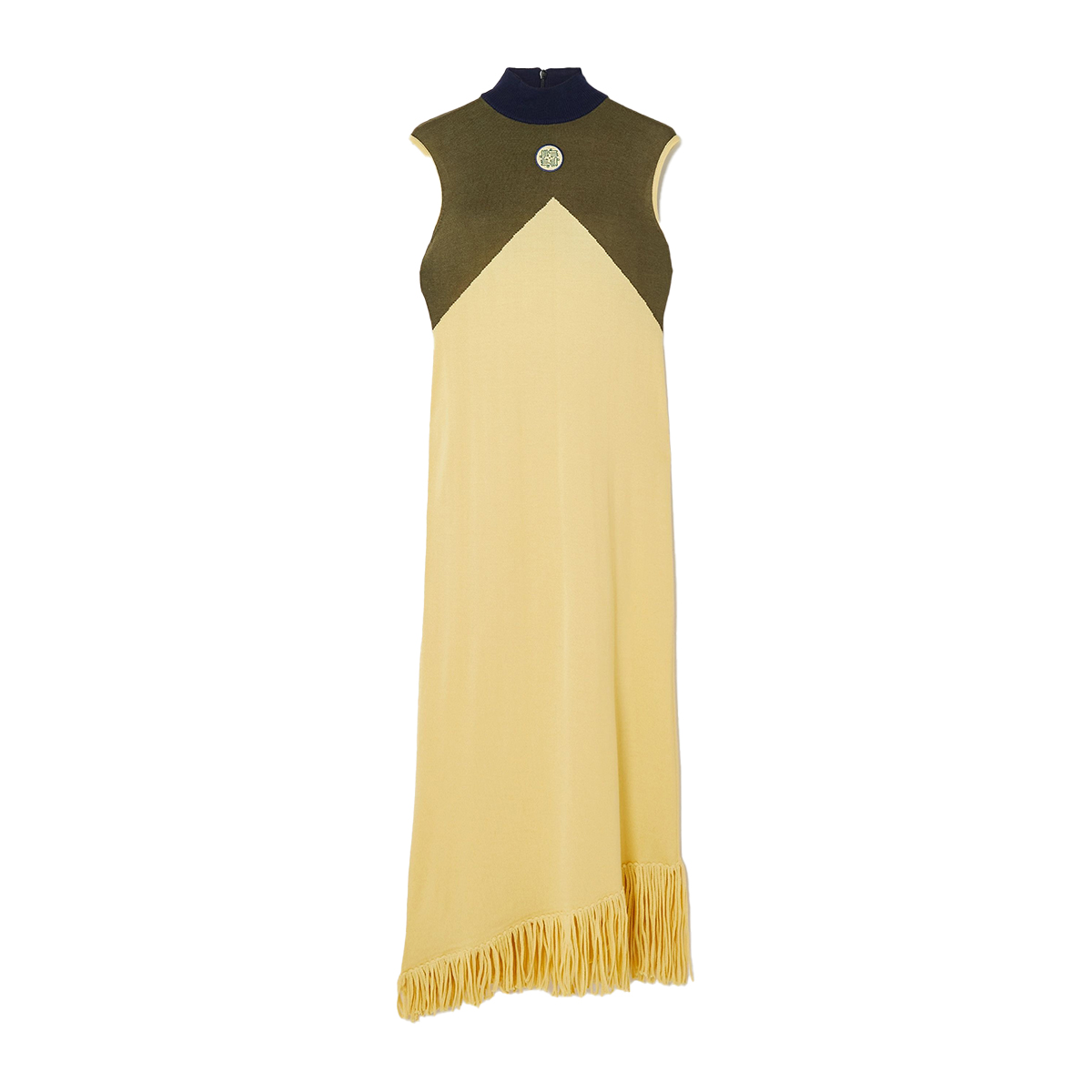Fashion's New Guard Is Assembling Around the World

Apart from the major fashion houses that have found ways to remain relevant for decades, most brands, like trends, cycle through periods of highs and lows. As hard as that may be to come to terms with, it’s the way of the industry. Consumers only have so much attention they can pay to fashion, which means that not every brand can sit at the helm forever. New names replace old favorites, and while we’ll never forget the designers and labels that came before, one of the most refreshing aspects of this business is the never-ending pool of fresh talent that brings forth unexpected trends and introduces us to unfamiliar perspectives.
As we speak, the next generation of industry-shaping designers is assembling around the world in established capitals like Paris and London as well as growing fashion bases like Cape Town and Barcelona. Rather than hold on to what we know, it’s our mission to usher in this collective of creatives, adding their pieces to our wardrobes and their stories into fashion’s history books. Leading the charge in 2023 are eight designers, all of whom have vastly different stories and craft vastly different pieces, ranging from ready-to-wear to couture. Keep scrolling to familiarize yourself with their work. Tip: Take notes. In fashion’s new world order, these are the names you’ll need to know.

Growing up with brothers, Alice Fresnel sought comfort in their oversize shirts and loose trousers, two articles of clothing that she could never find from womenswear brands. "No one was offering feminine yet comfortable clothes,” she tells us. Like so many designers before her, frustration was the root cause of her founding her brand, which she named Alfie. If she couldn’t find clothes that combined elegance and comfort, she’d have to make them herself. "I started developing the idea of Alfie while I was studying in Milan in 2019 at Bocconi University,” she says. "During this year, I had the chance to learn a lot about Italian craftsmanship and the beauty of a clean cut—I am a strong believer that the simplest idea stands the strongest and longest.”
For her debut collection, Fresnel studied the entirety of the ’90s, focusing on the era as a whole rather than just its fashion archives. "It is important to understand the broader picture and not focus on one theme only if you want to draw inspiration from a period in time,” she explains. "Naturally, my first muse was Christy Turlington. To this day, when I design a new collection, I think of how it would look on her and how she would style it.” When it came down to actually producing the collection, she was readying to move back to Paris after graduation and found an atelier in the French fashion capital that checked off every box. "Despite being told that it would be too expensive, my only focus was to produce really high-quality clothing that would last through time,” she says. "Three years later, our production is entirely based in Paris, and all our pieces are hand-cut before being sewn by the 13 seamstresses working there.”
Like so many around the world, Fresnel takes inspiration from the Parisian women she sees every day. "Paris is one of the only cities that is simultaneously full of energy and nonchalant, the same way Parisian women can be,” she says. "I design to dress these women, and I am always conscious of the fact that I want my collections to be easy to wear on any occasion. Elegant yet relaxed.”
Where do you go in Paris when inspiration runs dry?
I love to sit at cafés and watch people walk past. A single silhouette or attitude can catch my eye and inspire an entire collection. It is just so interesting to study how people hold themselves. How someone walks, talks, or dresses says a lot about them. But mostly, I am mindful of what my gut is telling me. I think creativity works best when it is guided by intuition.

There was never a question whether or not Mexico City–based designer Nia Thomas would go into a creative field when she grew up. "From as early as I can remember, I was always making things with my hands,” she says. "From hand-beaded necklaces I would sell at school for $5 to dance-recital costumes [that I would deconstruct and reconstruct], ideas were always brewing in my head, and art was a therapeutic release for me.” Thomas learned to sew at the age of just 13 years old in her aunt’s alteration shop and immediately began tailoring thrifted clothes to make them fit just the way she wanted them to. Becoming a designer and starting her own brand was practically written in the stars. "The moment I decided to pursue my career was after I had a fashion show/live-performance art presentation in October of 2018,” she recalls. "Seeing everyone’s reaction to the clothes and how I presented my concept was so empowering. People ran up to me after the show asking where they could buy the clothes immediately.” Two weeks later, about a year after she graduated from the Fashion Institute of Technology with a BFA in fashion design, her e-commerce website was up and running.
From the very beginning, Thomas has been adamant about her brand being a catalyst for change in the industry. "I wanted to integrate my core values into a brand, which includes ensuring that we create things in small batches with responsible production, that all of our products are artisanally made with an extreme emphasis on natural fibers using only plant-based dyes, and that we highlight diversity whenever possible,” she explains. "We don’t retouch our images, especially of our underpinnings, as we want our brand to accentuate the feminine figure in all of its natural beauty.” Women play a huge role in influencing Thomas’s designs, as does travel and the city she grew up in and continues to call home. "My design inspiration usually comes from many of my muses—such as Donyale Luna, Solange Knowles, and Donna Summer—but also my travels in places like Morocco, Costa Rica, Peru, and Hawaii,” she says. "The diversity in NYC inspires me the most. The way that all of the most intriguing cultures from around the world seamlessly wrap up in the bubble that is New York never ceases to amaze me.”
Where do you go in NYC and Mexico City when inspiration runs dry?
Since I’ve been spending so much time between NYC and Mexico City, it feels as if I have endless inspiration. From the vibrant colors of Luis Barragán’s house to the intricate lines of the Guggenheim Museum, architecture always stimulates me creatively. Also, street style in each of the cities is always a vibe. Seeing how people put together outfits in ways I would never think of definitely informs my design process. My personal favorite currently are very chic couples that complement each other’s style. I am constantly sneaking photos of outfit styling details I see on the subway or when sitting in the park.
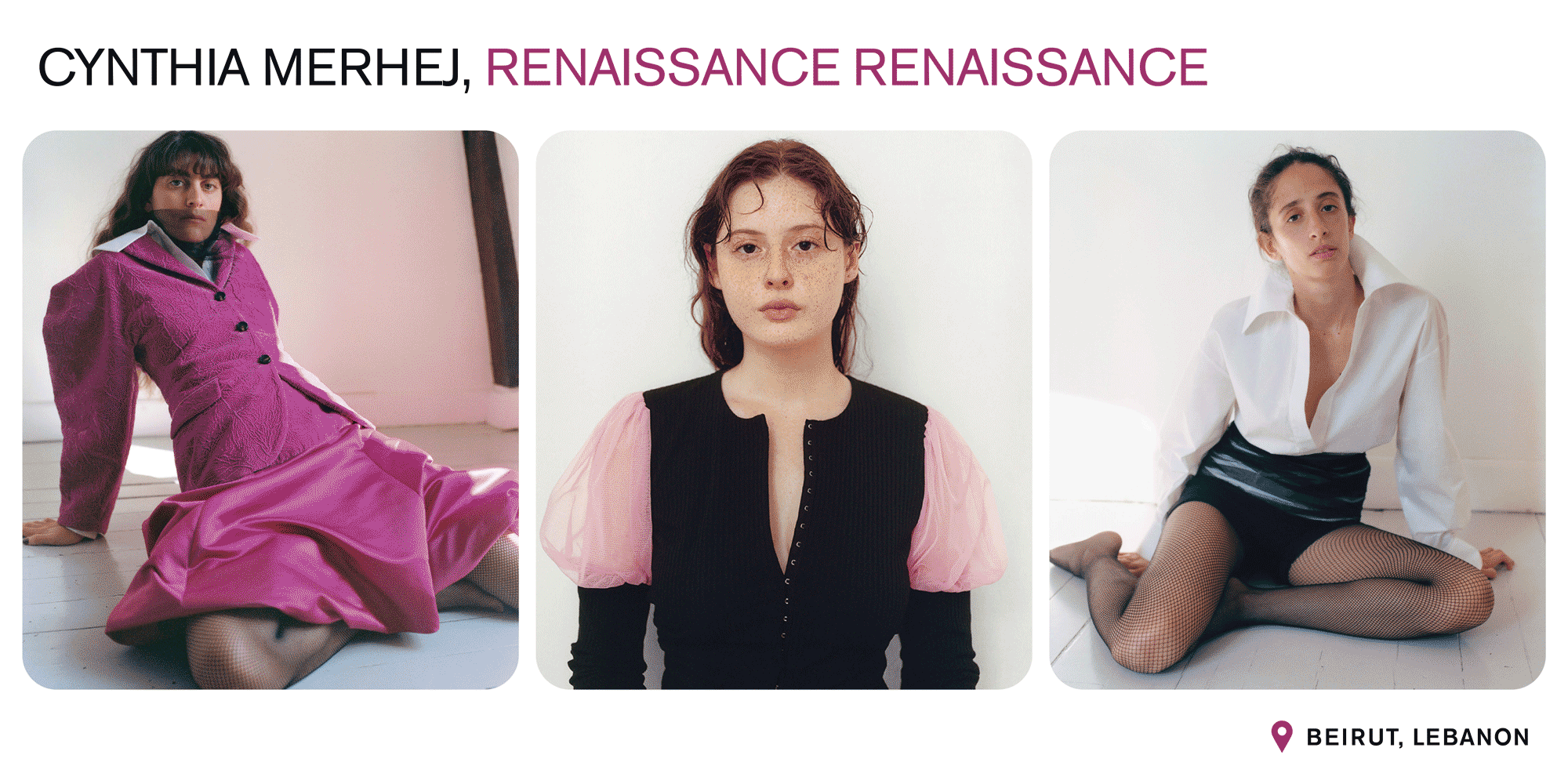
Cynthia Merhej never felt like she fit into the traditional fashion-designer mold. Instead of giving up, she made her own mold, one that would allow for an Arab woman like herself who didn’t come from a classical fashion-school background to find success and garner acclaim within the industry. "I love world-building, and I love clothes,” she says. "I came to the conclusion that if I really wanted to make this happen, I would have to create my own space where I could combine my love for storytelling with clothes.”
In 2016, this dream became reality when Merhej founded her line Renaissance Renaissance, which is now sold in some of the industry’s most trusted retailers, from Net-a-Porter and Nordstrom to Moda Operandi and Ssense. "It’s been a very wild journey, which has had a lot of experiments—many not working out—but I learned huge lessons,” she says. According to Merhej, the first few years of Renaissance Renaissance were humble ones. "I started out in my mom’s atelier doing small collections and pop-ups and selling directly to my friends,” she explains. (Both Merhej’s mother and great-grandmother were couturiers.) In the years since, she’s tested a bevy of other sales models, only to come to the conclusion that those quaint methods of selling and sharing her brand with the world were the most sustainable and responsible ones. "I see unchecked growth to be something that is terrible for designers, mentally and creatively, and terrible for the planet,” she explains. Like in those early days, she makes everything at her family’s atelier in Beirut, a city that inspires everything she does in life and work.
"In Beirut, we have been through and we go through a lot,” she says. "What inspires me about this city is that we are made very aware of the temporality of everything.” Because of that, Merhej says that its inhabitants enjoy every second of life, dressing up and going out frequently, all the while knowing that everything could change in an instant. "There is a constant juxtaposition of decadence and decay that is very unique to us here and which inspires my outlook on life and my work,” she explains.
Where do you go in Beirut when inspiration runs dry?
Personally, I am very introspective, so whatever helps me recharge. Sometimes, I don’t have to go anywhere, and sometimes, it could mean a day at the beach.

For Gabriela Comella, following in her mother’s footsteps was never the plan. The daughter of beloved Barcelona-based fashion and interior designer Gema Sach, Comella went in the direction of journalism rather than design, but it wasn’t long before genetics took over and the itch to create set in. "I was always interested in aesthetics, so I started to create those bags I was looking for and couldn’t find at the market,” she says. According to Comella, at the time that she decided to go off on her own and start Gabriel for Sach in 2015, there was a gap in the accessory offering. She was constantly searching for bags that felt unique but also comfortable and practical. Nothing felt like her. "So I started to do my own patterns and search for local providers,” she explains. "Fortunately in Spain, there is a certain tradition for leather and production. Seeing how it was possible to convert my designs into a product was something that got me hooked and motivated me to continue.” In her mind, this was the best possible way to start—without the goal of becoming a designer clouding her creativity. "Without the pressure,” she says. At first, the brand lived inside her mother’s, but before long, she established herself but kept the name to remember her origins.
Comella’s surroundings, like her mother’s influence, play a huge role in her brand’s identity. "Everything is designed and made in Barcelona,” she says. This allows there to be a constant connection between herself and production. That way, her pieces are always changing and improving until the perfect final product is reached. "It allows you to be present in the whole production process, from the designing until the assembling,” she says, adding that the city’s diverse landscapes and architecture provide endless inspiration and vision as well. "I love to see how architects combine and play with color, materials, and forms. Fortunately in Barcelona, you can find a wide variety of modern and contemporary buildings, which I love to walk around.” Like in architecture, Comella feels compelled to design pieces that have more than one use and purpose, giving them a timeless character. "I hate that fashion has to be linked to temporality and expires every season. That’s why I defend pieces that last over time,” she says.
Where do you go in Barcelona when inspiration runs dry?
If you drive one hour north, you can get to the Costa Brava. It’s my way of taking distance from my city routine, [where I] hike, swim, and refresh my brain to go back to inspiration. Nowadays, city life is very demanding, so one of my better ways to reset and get back to it is staying two days a week away from that dynamic and just touch the ground. This is how the most genuine ideas emerge.

New York City–based publicist and creative consultant Camilla Mayer started her NYC- and Phnom Penh–based resort brand Nary in May of 2020 alongside her two sisters, Stephanie Mayer-Guidi and Sarah Mayer. Named after their Cambodian mother, Phannary or Nary for short, Nary was founded with the goal of honoring her and her survival of the Khmer Rouge. Khmer Rouge, or the Communist Party of Kampuchea, took control of Cambodia in the ’70s and was responsible for one of the most significant mass killings of the 20th century, with nearly two million fatalities, according to the BBC. "Above all, our foremost objective was to pay tribute to our mom’s heritage and make a positive impact in this developing country,” Mayer says.
To combat the dominance of fast-fashion production in Cambodia, Mayer and her sisters made a deliberate choice to establish a sustainable and ethical brand based in the city where their mother grew up, Phnom Penh, which is home to a number of small sewing centers. "By doing so, we create safe and meaningful employment opportunities for women who are vulnerable to exploitation in the realms of labor or sex,” she says. At these sewing centers, local women craft Nary’s beloved shirred resortwear using leftover deadstock materials from fast-fashion brands that manufacture nearby and oftentimes abandon excess fabric. "We tap into this secondary market by sourcing all our fabric locally, thereby significantly reducing our carbon emissions and limiting more waste,” Mayer adds.
As part of their mission to support the city their mother grew up in, rather than opening the first Nary store in NYC, where it would almost certainly be easier and more convenient to kick-start a brick-and-mortar business, Mayer and her sisters just opened one in Phnom Penh. This, despite being difficult, is what Mayer considers one of the many ways that Nary stands out against other brands starting out in NYC.
Where do you go in Phnom Penh when inspiration runs dry?
When we face a lack of inspiration, we make it a point to travel around Southeast Asia, reconnecting with its people and culture. This region is incredibly diverse, with stunning mountains, oceans, islands, and rainforests. It also has bustling cities like Bangkok, Thailand, which reminds us of our home city of New York City. The kindness and distinct culture of Southeast Asia greatly influence our designs and drive us to showcase them through our brand to a U.S. audience.
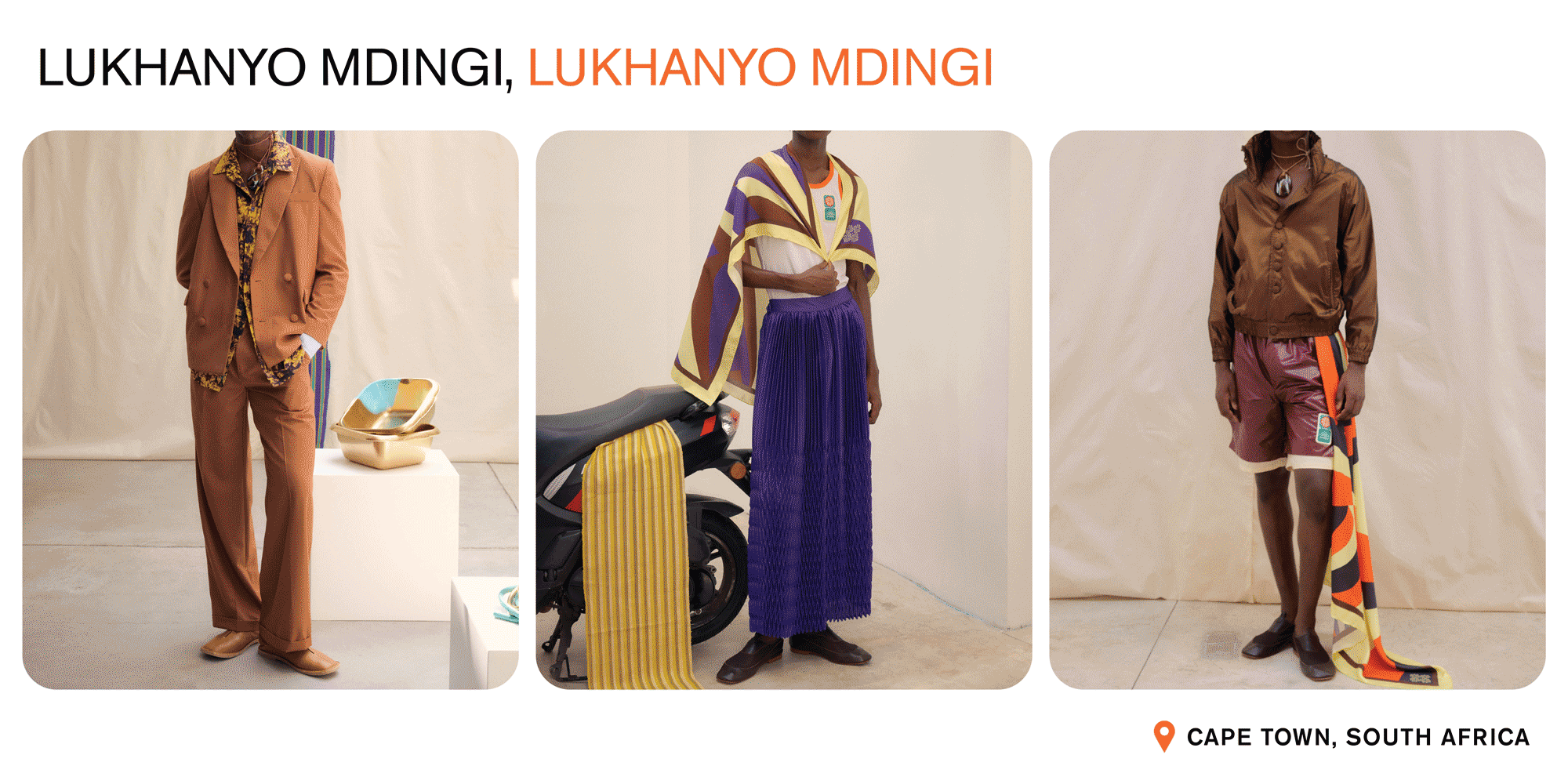
"Being a ’90s kid and growing up in the era of the rise of MTV, supermodels, and daytime soap [operas], I was a 5-year-old kid that was left in a chokehold, and I mean that in the best kind of way,” says Lukhanyo Mdingi of the inspiration behind his namesake fashion brand, which he founded in Cape Town in 2015. "The creativity and energy that centered around these worlds is something that was instant.” According to the designer—who was a finalist for the LVMH Prize in 2021 and one of three winners of the Karl Lagerfeld Prize that same year and has been featured in British Vogue—inspiration isn’t something he’s ever been short on, whether he’s getting it from the community he’s built around himself and the brand, those ’90s references he grew up on, or Cape Town itself. "There is a relaxed and eclectic sensibility that is woven within the city of Cape Town,” he says. "I feel that this is a sentiment that is indicative of the LM cosmology.”
Between all of these areas, though, Mdingi says that it’s his community that he owes his success to the most. "The premise of Lukhanyo Mdingi began with intentional and considered design,” he explains. "It was through the practice of design where I realized the value of collaboration. We’ve been fortunate enough to have an extraordinary cabinet of people that have added their time, talent, and trust as a means of service to the LM brand, and it’s been through their ingenuity and spirit that has made the label what it is today.”
Where do you go in Cape Town when inspiration runs dry?
My home or my studio. These are immediate spaces to me where I’ve created my own universe. These places spark a fire in my heart and bring peace to my mind.

Frustrated by the imbalance that’s present between men’s and women’s suiting for corporate workplaces, Sydney-based designer Gabriella Pereira left her career in finance to begin another in fashion. "I continually struggled to find chic and simple luxury suiting that was ethically made,” Pereira says. "My male colleagues seemed to have a plethora of options, but I felt as though the professional woman who wanted to look chic while not worrying about what to wear was not thoroughly catered for.” Now, after launching her brand Beare Park during the pandemic in 2021, Pereira uses the highest-quality materials found in Australia—mostly Australian merino wool—and has them woven in century-old mills in the Biella region of Italy. "From there, I selfishly design the collection around what I wish I had in my wardrobe,” she says, making only limited batches of each garment and relying on local master tailors to ensure that the craftsmanship in each piece can be felt when you put it on.
Sydney’s influence on Beare Park goes far beyond just manufacturing, though. "The brand has a distinct sensibility of ease and optimism that is synonymous with Sydney,” says Pereira. "My constant proximity to Sydney’s glorious beaches definitely influences the fact that every Beare Park piece can be effortlessly paired with a chic flat sandal.” For her, an ideal outfit consists of an oversize wool suit, an organic cotton tee, and sleek sandals. Dressing simply like this is at the core of the Beare Park world, Pereira insists. The ability to find pieces that check every box, after all, is the reason Pereira founded her brand in the first place.
Where do you go in Sydney when inspiration runs dry?
When I feel stuck creatively, I find there is nothing better than clearing a day’s schedule and spending some solo time with the heavenly freedom of no commitments. To invite true inspiration, I have to spend time with a calm and clear mind. Taking time away from our Redfern studio to be with my own thoughts is an important part of my creative process. It’s a challenge to pull away from the day-to-day of the business, but sometimes, the best inspiration will come during an unscheduled day at home spent cooking, painting, going for a long, meandering walk or drive. It’s been a real challenge for me to learn that you can’t schedule creativity and good ideas.

"I’ve always wanted to make clothes,” says Talia Loubaton, founder of the London-based brand Liberowe. "I was sketching before I could write my name.” It wasn’t until she was 15 years old, though, when she was at the Musée des Arts Décoratifs in Paris at the retrospective exhibition of Christian Lacroix that she realized exactly what it was that she wanted to design. "I remember being blown away by all the work, the details, the embroideries, and laces. … There was a little black bolero jacket styled on a puffy dress,” she recalls. Stuck on it, Loubaton says it was then and there that she knew jackets would be her life’s work. All these years later, despite a brief journey into knitwear during her studies at Central Saint Martins, they still are.
Loubaton started Liberowe in 2021 with the Raja Signature Jacket, which was inspired by traditional menswear jackets in India, called sherwani, that she saw during her travels in Delhi. "They reminded me of the opening scene of Manon 70—my favorite French movie from the late ’60s—starring Catherine Deneuve, in which she wears a Nehru-collar jacket,” she says. "I came back to London and started making my own version of sherwanis—a little more feminine yet not too much. I reshaped it again and again until I found the right balance and a perfect fit.” The Raja Signature Jacket remains a core piece for Liberowe and is one Loubaton develops and adapts season after season.
Though a majority of her design inspiration comes from growing up in Paris and hearing stories of it in the ’60s from her grandmother and her travels in India, her current home base in London isn’t irrelevant in the least bit. "London inspires me for its multiculturalism and its freedom,” she says. "What amazes me here, in comparison to Paris where I grew up, is the absence of judgment and prejudice against one’s look. Religions are expressed freely. Nothing is a taboo. There is no dress code, no lines to follow. It feels like a great blank canvas.” The city’s energy is also partially responsible for pushing Loubaton to begin this entrepreneurial journey in the first place. "There are always great shows, exhibitions, new shops, libraries, and endless museums,” she adds.
Where do you go in London when inspiration runs dry?
To be honest and luckily, inspiration hasn’t run dry yet. My issue is often having to edit the collection and narrowing down ideas. But yes, going to a fabric shop always makes me electric. The contact of fabric, the feel of the drape, the shine, the texture, it’s always magic.

Eliza Huber is an NYC-based senior fashion editor who specializes in trend reporting, brand discovery, and the intersection of sports and fashion. She joined Who What Wear in 2021 from Refinery29, the job she took after graduating with a business degree from the University of Iowa. She's launched two columns, Let's Get a Room and Ways to Wear; profiled Dakota Fanning, Diane Kruger, Katie Holmes, Gracie Abrams, and Sabrina Carpenter; and reported on everything from the relationship between Formula One and fashion to the top runway trends each season. Eliza lives on the Upper West Side and spends her free time researching F1 fashion imagery for her side Instagram accounts @thepinnacleoffashion and @f1paddockfits, watching WNBA games, and scouring The RealReal for discounted Prada.
-
 9 Classic Shoe Trends French Women Are Wearing This Spring
9 Classic Shoe Trends French Women Are Wearing This SpringVersatile and chic.
By Judith Jones
-
 Everyone I Know Loves Parisian Style—These 5 Outfit Ideas Are Trend-Forward Yet Still Feel Classic
Everyone I Know Loves Parisian Style—These 5 Outfit Ideas Are Trend-Forward Yet Still Feel ClassicEffortless vibes.
By Bobby Schuessler
-
 Everyone in Paris Is Wearing This Dress Trend Instead of Slips and Drop Waists Now
Everyone in Paris Is Wearing This Dress Trend Instead of Slips and Drop Waists NowIt's a quintessentially French style.
By Michelle Scanga
-
 I Have Proof—These Are the Shoes New Yorkers Always Wear With Trench Coats
I Have Proof—These Are the Shoes New Yorkers Always Wear With Trench CoatsIt's NYC's spring uniform.
By Natalie Cantell
-
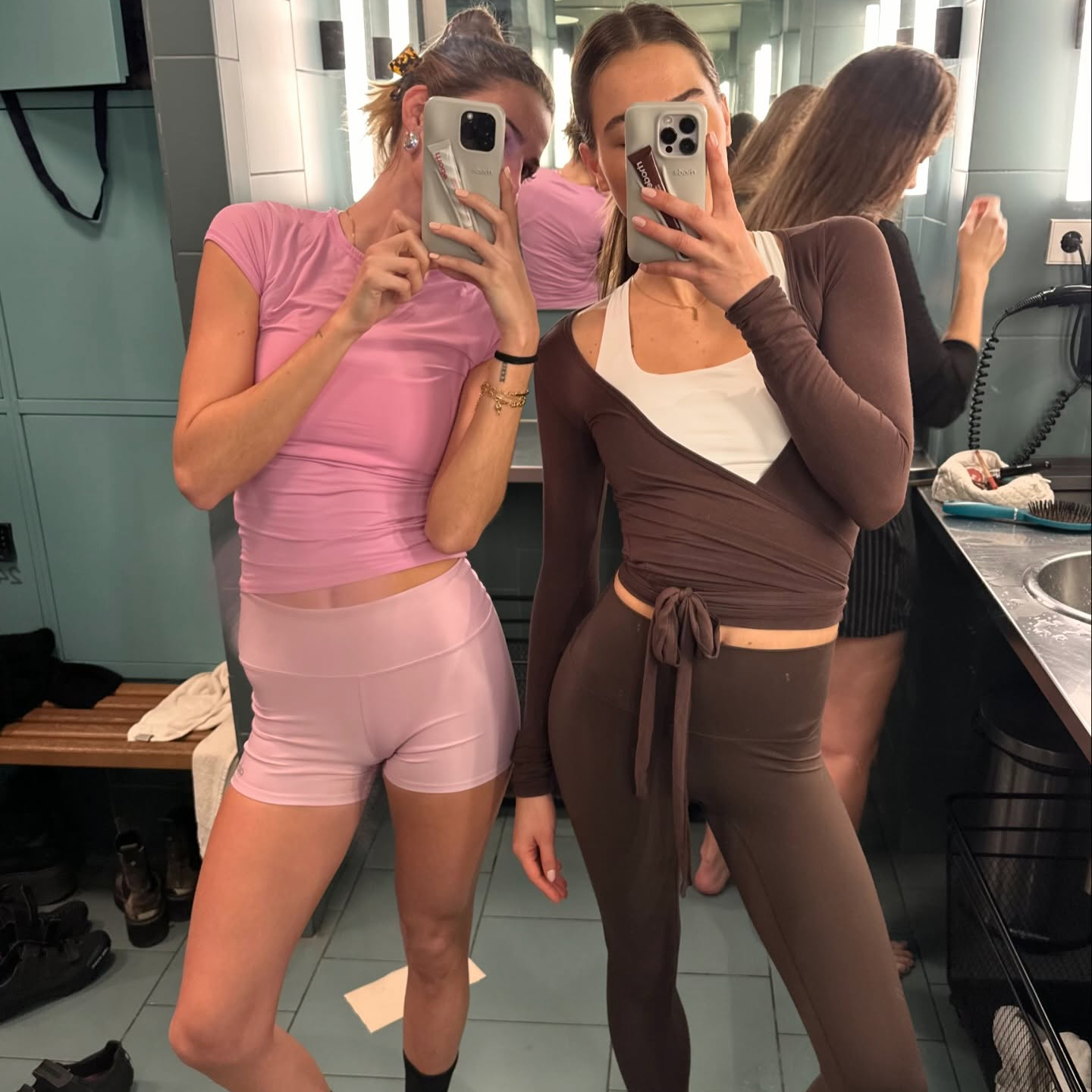 5 Activewear Trends I Spot in Every Pilates Studio in Manhattan
5 Activewear Trends I Spot in Every Pilates Studio in ManhattanWhat NYC fashion people are wearing to work out.
By Natalie Cantell
-
 If a French Girl Shopped the Amazon Big Spring Sale, These Are the 25 Items She'd Add to Her Cart Immediately
If a French Girl Shopped the Amazon Big Spring Sale, These Are the 25 Items She'd Add to Her Cart ImmediatelyFrom straight-leg jeans to classic trench coats.
By Judith Jones
-
 5 Spring Outfit Trends Everyone in My Brooklyn Neighborhood Is About to Wear
5 Spring Outfit Trends Everyone in My Brooklyn Neighborhood Is About to WearClothes for real life.
By Natalie Cantell
-
 If a Chic Parisian Shopped the Nordstrom Spring Sale, These 31 Elevated Items Would Be Their Favorites
If a Chic Parisian Shopped the Nordstrom Spring Sale, These 31 Elevated Items Would Be Their FavoritesEasy and elegant pieces.
By Bobby Schuessler




